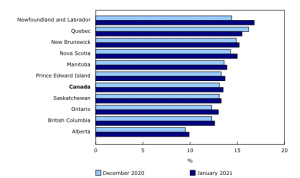
The 2021 Canada Games Host Society Inc., a non-profit organization, is seeking rate card style proposals for the equipment required for A. games-time use, B. commissioning/decommissioning installations and C. warehouse operations.
Email Intent to submit by Friday April 23rd, 2021 – 4:00 PM
Proposals to be completed and submitted by Friday May 7th, 2021 – 4:00 PM
SECTION ONE | INTRODUCTION
About the Niagara 2022 Canada Summer Games [Niagara 2022 CSG]
At the peak of Niagara’s boldest summer yet, more than 5,000 young athletes and their coaches will gather to compete for the podium in Canada’s largest multi-sport event. On its road to glory, this shining generation of hopefuls will leave its mark on our community and on the country – transforming, inspiring, and unifyingus all through the power of sport.
As ambassadors of Niagara’s unrivaled warmth and compassion, thousands of volunteers will play host to the nation. The Niagara 2022 Canada Summer Games will celebrate the wonder of sport alongside arts and culture. The Games will honour our indigenous communities, and showcase a remarkable heritage of hardwork and innovation in one of the world’s most awe-inspiring destinations.
With world-renowned hospitality, the people of Niagara will welcome visitors from across the country. Spirited events, spectacular entertainment, and the theatre of elite competition will spark new energy in the region as our streets, skies, and waterways shimmer with ceremony and celebration that is befitting of Canada’s best young athletes.
From August 6th to 21st, 2022, Niagara will surge stronger than ever on the national stage. The Games will give rise to a new legacy of ambition, confidence, and compassion that will inspire generations to come.
About the 2022 Canada Games Host Society
In preparation for the games, a Host Society has been established and led by a Board of Directors that iscomposed of passionate, experienced and accomplished sport and community leaders.
The goals of the Host Society are to:
- Provide a phenomenal experience for the athletes and other participants at the Niagara 2022 — An experience that will propel their development, allow them to perform their best and inspire them to dream big
- Provide a legacy of sport infrastructure and programs that are vital for Niagara, Ontario, and Canadiansport development
- Provide a legacy of infrastructure, community programs and unify a spirit that will be transformative for Niagara
- Provide an unmatched podium and partnership for the Canada Games Council to build upon thesuccess of previous Canada Games and strengthen the Canada Games property
SECTION TWO | SCOPE OF WORK
The Niagara 2022 Canada Summer Games Host Society is seeking an organization to provide us with a rate card style proposal for all of our equipment needs. This equipment will encompass three components of our operations:
- Games Time Requirements (August 5 – 22, 2022)
- Commissioning/Decommissioning Requirements
July 27 – August 5 (commissioning), August 13-14 (turnaround / commissioning for week 2 only venues, decommissioning for week 1 only venues) and August 22-24, 2022 (decommissioning)
- Warehouse Requirements (various – starting around November 2021)
Scope of Work Details
Responsibilities and equipment requirements would include but are not limited to:
A. Games Time Requirements
- ‘Gator’ style Utility cart – 6 seater with cover
- ‘Gator’ style utility cart – 4 seater
- 5500 W portable Gas Generator
- 12000 W portable Gas Generator
- 50 kW Diesel Generator
- 80 kW Diesel Generator
- 50A, 20/240 GFCI Distro panel
- 20 kW LED Telescopic Light Standard (Diesel)
- Cable Mats (trap style)
- 4/0 Standard Feeder Cables – 100’ lengths
- 4/0 Standard Feeder Cables – 200’lengths
- Diesel Fuel Tank – 1000l
- 10’ X brace scaffolding – Per section with one deck per – Wheels
- Water Ballast
- Concrete Ballast
- Convertible hand truck
B. Commissioning/Decommissioning Requirements (Games setup/teardown)
- 45’ Articulating Boom Lift – Diesel (Ext)
- 45’ Articulating Boom Lift – Electric (Int)
- 32’ Scissor Lift – Diesel (external use)
- 32’ Scissor Lift – Electric (interior use)
- 26’ Scissor Lift – Diesel (exterior)
- 26’ Scissor Lift – Electric
- 32’ All Terrain Scissor Lift – Diesel (ext)
C. Warehouse Requirements
- Pallet Jack – 5500lbs Manual
- Pallet Jack 5500 lbs Electric
- 2 Stage Forklift – 5000 lbs lift
- Standard Forklift fork extensions
- Loading dock lift – 6000 lbs, semi-portable, no pit install
- ‘Straddle stacker’ – manual push
D. On Call Support and Servicing
- Costs for any on-call support or servicing required prior to peak
- A proposal to provide 24/7 support during times as listed as 1 and 2 in Scope of Work
E. Freight / Delivery charges
- Proposal for a fee system to deliver and pick up games time equipment to each of ourvenues during the peak time frame listed above (see Appendix A for our Games Footprint)
- Proposal for a fee system to deliver and pick-up warehouse equipment at ourwarehouse located at:
250 Martindale Road St. Catharines L2S 0B2
- Proposal for a fee system to facilitate the movement between venues during peak times (multiple movements a day).
The Fit-Out Leadership volunteers will be the on venue point of contact for all general contractors and suppliers. All pre-games communications and planning will be done with the Logistics & Overlay staff.
Health and Safety
Submissions are encouraged to include company policies and considerations for health and safety where applicable and appropriate
Accessibility
Submissions are encouraged to include accessibility considerations and features where applicable and appropriate.
Sustainability
Submissions are encouraged to incorporate measures to ensure their goods and/or services are sustainable and environmentally friendly in nature and/or execution.
The Niagara 2022 CSG Host Society is looking forward to working with an experienced and collaborative organization whose values align with ours and who are excited about being a part of these historic games – Once, and for All.
SECTION THREE | RFP SCHEDULE OVERVIEW
- RFP issued Tuesday April 6th, 2021
- Notice of Intent to Submit Due Friday April 23rd, 2021 – 4:00 PM
- Last day for Submission of Questions Tuesday May 4th, 2021 – 4:00 PM
- Proposal and Supporting Documents Due Friday May 7th, 2021 – 4:00 PM
- Decision Date Friday May 14th, 2021
- Anticipated Start Date November 1st, 2021
- Anticipated Conclusion Date October 30th, 2022
SECTION FOUR | RFP SCORING
Submitted RFPs will be scored as follows:
- Responsiveness to Scope of Work 25%
- Demonstrated experience and expertise in similar projects 15%
- Cost effectiveness 25%
- Value-In-Kind opportunities 25%
(either budget relief and/or project enhancements)
- Comprehensiveness 5%
- Company Profile 5%Total 100%
SECTION FIVE | RESPONSE SUBMITTAL REQUIREMENTS
Responsiveness to Scope of Work
We are seeking comprehensive and informative proposals that clearly outline your ability to fulfill our requirements. Information to include in your proposal include and are not limited to the following:
- Key Dates (operational time-frames)
- We are requesting the RFP be submitted in the form of a rate card per type of item per day, week and month along with the identification of like items and alternative sizes/specs or fuel sources.
- Please show your costing for those sections listed under ‘Details’ in which your company can provide
- Identification of services of products that be subcontracted out and to whom
- Résumé of staff member(s) who would be identified as the Liaison for the Niagara 2022 Organization (if applicable)
- Others
Demonstrated Experience and Expertise in Similar Projects
Please outline a detailed summary of at least one (1) comparable projects which the proposer has completedin the last three to five years. For each referenced project, please make certain to include all relevant detailssuch as:
- Description of scope of project
- Time to execute
- Cost and associated fees
- Lessons Learned
- Others
Cost Effectiveness
Our decision process will be to secure a partner who’s services best delivers the goals of the Niagara 2022 CSG , while also being cost-effective and financially responsible.
Sponsorship / VIK
The Niagara 2021 CSG Host Society is not merely looking for a vendor with a fee for service approach. Instead, it is our belief that all vendors associated with the Niagara 2022 CSG become strategic event partners offering both fee for service; as well as, Value In-Kind (VIK) opportunities.
We encourage vendors to include budget relieving VIK (a reduction in cost to the requirements outlined in the Scope of Work), as well as enhanced VIK (additional services or features, not specifically outlined in the Scope of Work).
In addition, as a host society we are continually seeking cash sponsorship opportunities as well. Any interest in cash sponsorship can be submitted in conjunction with or separate from submitted proposals.
Comprehensiveness
Your comprehensiveness score will be based upon whether or not your intent to respond matches your submitted proposal.
Company Profile
Please provide a brief history of your organization, and if you intend to subcontract some of the work to another firm, include their information in this RFP as well.
If one person will have the primary responsibility for this project, provide us with their information and relevant resume.
SECTION SIX | RFP GENERAL INFORMATION
References
Please provide the name, address, and phone number of three (3) current clients, who would be capable of explaining and confirming your firm’s capacity to successfully complete the scope of the work outlined herein.
Contract Terms
All material produced, data collected, and reports generated by the contractor or subcontractor on behalf of Niagara 2022 CSG are confidential and become exclusive property of Niagara 2022 CSG. The contractor may not share program materials, customer data, industry or program participant contact information, etc. unless explicitly authorized by Niagara 2022 CSG to do so.
This RFP does not commit to pay any costs incurred in the preparation of a proposal or to procure or contract for services. Niagara 2022 CSG reserves the right to accept or reject any or all proposals received as a result of this RFP, to negotiate with all qualified bidders and to cancel the RFP, in part or in its entirety at its sole discretion.
Niagara 2022 CSG reserves the right to refuse to work with any partners, vendors or sponsors that may reflect negatively on the organization, Niagara Place and/or any Games stakeholder.
Additional Information or Clarification
All questions and requests for clarification should be submitted with the contact listed below. Questions and answers will be documented and distributed to all bidders. If necessary, an addendum will be issued. Response to questions will typically be within 72 hours of receipt.
Please be certain to include the name and contact details of the persons to be approached for clarificationof the proposal if needed.
Niagara 2021 CSG requires one (1) electronic copy of your proposal. Submissions are to be sent to:
Dan Kennedy
Manager, Procurement and Contract Administration
dkennedy@2022canadagames.ca
Appendix A – Games Footprint
See the attached visual of our Games Footprint which includes the locations of all our venues. The games time equipment will be delivered to the majority of these venues.
The commissioning/decommissioning equipment will need to travel to all of these venues in a couple of days to facilitate the installation of our look & signage.
Website for Games Footprint: https://www.google.com/maps/d/u/0/viewer?mid=1qCWA23ScSGqDMao2NtR3sRBjmn2OTnJb&ll=43.131 31567086089%2C-79.23510833401026&z=11
Demande de propositions
ÉQUIPEMENT SERVANT À L’AMÉNAGEMENT DESSITES
DP 44 – 1009
Jeux d’été du Canada Niagara 2022
La 2021 Canada Games Host Society Inc., un organisme à but non lucratif, sollicite des propositions en format « grille tarifaire » pour l’équipement dont nous aurons besoin A. lors de la tenue des Jeux; B. pour la miseen service et la mise hors service des installations; C. à des fins d’entreposage.
Envoyer votre déclaration d’intention de soumissionner par courriel au plus tard le vendredi 23 avril2021 à 16 h 00 HNE.
Les propositions doivent être mises au point et soumises au plus tard le vendredi 7 mai 2021 à 16 h00 HNE.
PREMIÈRE SECTION | INTRODUCTION
À propos des Jeux d’été du Canada Niagara 2022
La saison estivale 2022 s’annonce des plus prometteuses dans la région de Niagara. Au plus fort de l’été, plus de 5 000 jeunes athlètes, accompagnés de leurs entraîneurs, se livreront une chaude lutte pour atteindre le podium lors du plus important événement multisport du Canada. En route vers la gloire, cettegénération brillante d’espoir laissera sa marque sur notre communauté et sur le pays grâce au pouvoirtransformateur, inspirateur et rassembleur du sport.
Ambassadeurs de la bienveillance et de l’hospitalité inégalée de la région de Niagara, des milliers debénévoles seront les hôtes de la nation. Les Jeux d’été du Canada Niagara 2022 célébreront les merveilles du sport aux côtés des arts et de la culture. Les Jeux rendront hommage à nos communautés autochtones et mettront en valeur un héritage remarquable de travail acharné et d’innovation dans l’une des destinationsles plus impressionnantes au monde.
La renommée mondiale de l’hospitalité de la région n’est plus à faire; la population de Niagara accueillera chaleureusement des visiteurs de partout au pays. Des événements animés, des divertissementsspectaculaires et le théâtre de compétitions d’élites susciteront une nouvelle énergie dans la région alorsque nos rues, nos ciels et nos voies navigables scintilleront de cérémonies et de célébrations dignes desmeilleurs jeunes athlètes canadiens.
Du 6 au 21 août 2022, la présence de la région de Niagara sera plus forte que jamais sur la scène nationale. Les Jeux créeront un nouvel héritage d’ambition, de confiance et de compassion qui inspirera lesgénérations à venir.
À propos de la Société hôtesse de 2022
En préparation des Jeux, une Société hôtesse a été établie, dirigée par un Conseil d’administration qui secompose de leaders communautaires et sportifs passionnés et chevronnés.
Les objectifs de la Société hôtesse sont les suivantes :
- Offrir une expérience exceptionnelle des Jeux à tous les athlètes et autres participants aux JECNiagara Cette expérience favorisera l’épanouissement sportif et la performance optimale desathlètes, tout en les inspirant et en les faisant rêver.
- Laisser en héritage une infrastructure et des programmes sportifs qui seront indispensables audéveloppement du sport à l’échelle régionale, provinciale et
- Créer un legs transformateur pour la région de Niagara, qui comporte de l’infrastructure, desprogrammes communautaires et un esprit collectif
- Établir un podium et un partenariat inégalés et couronnés de succès avec le Conseil des Jeux duCanada sur lequel il pourra s’appuyer pour renforcer la marque et la propriété des Jeux du
DEUXIÈME SECTION | LA PORTÉE DU TRAVAIL
Les Jeux d’été du Canada Niagara 2022 cherchent une entreprise qui pourra nous fournir une proposition en format « grille tarifaire » qui répondra à tous nos besoins en matière d’équipement. Trois composantes denotre opération nécessitent des équipements :
- Le déroulement des Jeux (du 5 au 22 août 2022)
- La mise en service et la mise hors service
Du 27 juillet au 5 août (mise en service); du 13 au 14 août (transition – mise en service dessites qui n’opèrent que pendant la deuxième semaine, mise hors service des sites quin’opèrent que pendant la première semaine); du 22 au 24 août 2022 (mise hors service).
- L’entreposage (diverses dates à partir de novembre 2021)
Détails de la portée du travail
Les responsabilités et les besoins en matière d’équipement comprennent les suivants, sans s’y limiter :
A. Le déroulement des Jeux
- Chariot tout usage du style « Gator » – 6 places, couvert
- Chariot tout usage du style « Gator » – 4 places
- Génératrice portable alimentée au gaz – 5 500 W
- Génératrice portable alimentée au gaz – 12 000 W
- Génératrice alimentée au diesel – 50 kW
- Génératrice alimentée au diesel – 80 kW
- Panneau de distribution DDFT – 50A, 20/240
- Mât d’éclairage télescopique standard – 20 kW, LED, diesel
- Tapis protège câble (avec canaux de passage)
- Câbles d’alimentation standard – calibre 4/0, longueurs de 100 pi
- Câbles d’alimentation standard – calibre 4/0, longueurs de 200 pi
- Réservoir de carburant diesel – 1 000 L
- Échafaudages reliés par entretoises – 10 pi par section, 1 plancher chacun, roulettes
- Lest à eau
- Lest en béton
- Chariot manuel convertible
B. Mise en service et mise hors service (montage et démontage des Jeux)
- Nacelle à flèche articulée – 45 pi, diesel, usage extérieur
- Nacelle à flèche articulée – 45 pi, électrique, usage intérieur
- Table élévatrice à ciseaux – 32 pi, diesel, usage extérieur
- Table élévatrice à ciseaux – 32 pi, électrique, usage intérieur
- Table élévatrice à ciseaux – 26 pi, diesel, usage extérieur
- Table élévatrice à ciseaux – 26 pi, électrique
- Table élévatrice à ciseaux tout-terrain – 32 pi, diesel, usage extérieur
C. Entreposage
- Transpalette manuel – 5 500 lb
- Transpalette électrique – 5 500 lb
- Chariot élévateur avec mât duplex – 5 000 lb minimum
- Rallonges de fourche pour chariot élévateur standard
- Plateforme élévatrice – 6 000 lb, semi-portable, aucune installation en fosse
- Chariot gerbeur cavalier – manuel
D. Services de soutien et d’entretien sur demande
- Les coûts pour tout service de soutien ou d’entretien fourni sur demande avant lapériode de
- Une proposition pour fournir un soutien 24 heures sur 24, 7 jours sur 7 au cours despériodes établies dans les points 1 et 2 de la portée du
E. Les frais de transport et de livraison
- Une proposition de système de redevance pour la livraison et la récupération sur les sitesdes équipements requis pendant la tenue des Jeux lors de la période de pointe établie ci-dessus (voir l’Annexe A pour consulter la carte des Jeux).
- Une proposition de système de redevance pour la livraison et la récupération deséquipements d’entreposage à l’entrepôt des Jeux, situé à l’adresse suivante :
250 Martindale Road St. Catharines L2S 0B2
- Une proposition de système de redevance pour le transport des équipements entre les sitespendant la période de pointe (de multiples déplacements seront requis par jour).
Les bénévoles en chef de l’aménagement seront les personnes-ressources sur site à qui les contractants etles fournisseurs pourront s’adresser. Toute la communication et la planification qui ont lieu avant la tenue desJeux s’effectueront auprès du personnel de la logistique et de l’aménagement.
Santé et sécurité
Les soumissionnaires sont encouragés à inclure les politiques et les considérations en matière de santéet de sécurité de leur entreprise là où cela s’avère pertinent et approprié.
Accessibilité
Les soumissionnaires sont encouragés à inclure des caractéristiques d’accessibilité dans leurproposition là où cela s’avère pertinent et approprié.
Durabilité
Les soumissionnaires sont encouragés à prévoir des mesures qui assurent la durabilité et le caractèreécologique des produits ou des services fournis.
La Société hôtesse des JEC attend avec intérêt de travailler avec une entreprise dont les valeurs s’alignent avec les nôtres, soit une entreprise expérimentée, collaborative et enthousiaste à l’idée de participer à cesJeux historiques – une fois, pour tous.
TROISIÈME SECTION | VUE D’ENSEMBLE DU CALENDRIER DE LA DP
- Date de publication de la DP le mardi 6 avril 2021
- Date limite pour faire une déclaration d’intention de soumissionner le vendredi 23 avril 2021
- Date limite pour envoyer des questions le mardi 4 mai 2021 à 16 h
- Date limite pour envoyer la proposition et les documents pertinents le vendredi 7 mai 2021
- Date de la décision le vendredi 14 mai 2021
- Date de début du contrat prévue le 1er novembre 2021
- Date de conclusion du contrat prévue le 30 octobre 2022
QUATRIÈME SECTION | ÉVALUATION DES DP
Toute proposition soumise sera évaluée en tenant compte des critères suivants :
- la mesure dans laquelle elle répond aux exigences énoncées dans la portée du travail 25 %
- l’expérience et l’expertise avérées de l’entreprise dans le cadre de projets similaires 15 %
- la rentabilité de la proposition 25 %
- les possibilités de contribution en nature 25 %(soit par l’allègement du budget ou par des améliorations apportées au projet)
- l’exhaustivité de la proposition 5 %
- le profil de l’entreprise 5 %
Total 100 %
CINQUIÈME SECTION | EXIGENCES DE SOUMISSION À REMPLIR
La capacité de répondre aux exigences énoncées dans la portée du travail
Nous sommes à la recherche de propositions exhaustives qui démontrent clairement la capacité de votreentreprise à répondre à nos exigences. Assurez-vous d’inclure, au minimum, les informations suivantes :
- les dates clés (le calendrier des opérations);
- une proposition en format de grille tarifaire qui établit le coût par jour, par semaine et par mois dechaque équipement, en plus d’identifier les équipements semblables et les dimensions, lesspécifications techniques ou les sources de carburant alternatives;
- la ventilation des coûts associés à chaque point énuméré dans la section « Détails » pour lequel votreentreprise peut fournir des services;
- l’identification de toute phase du projet qui sera confiée à un sous-traitant et lesrenseignements pertinents sur celui-ci;
- le V. du membre du personnel qui sera désigné agent de liaison pour l’organisation Niagara 2022;
- tout autre
Une expérience et une expertise avérées dans le cadre de projets similaires
Décrivez en détail au moins un (1) projet comparable réalisé par le soumissionnaire au cours des trois à cinqdernières années. Assurez-vous d’inclure les détails pertinents de chaque projet, tels que :
- la description de la portée du travail;
- les délais d’exécution pour chaque phase du projet;
- les coûts et les frais associés au projet;
- les leçons à retenir;
- tout autre détail
La rentabilité
Notre processus décisionnel visera à établir un partenariat avec l’entreprise qui est le plus en mesure deréaliser les objectifs des JEC Niagara 2022, sans compromettre la rentabilité.
Les commandites et contributions en nature
La Société hôtesse des JEC Niagara 2022 ne recherche pas uniquement des fournisseurs qui adoptentun modèle de rémunération à l’acte. Nous sommes de l’avis que tout partenaire associé aux JEC Niagara2022 devient partenaire stratégique de l’événement en offrant à la fois des services rémunérés à l’acte ainsique des contributions en nature.
Nous encourageons les soumissionnaires à inclure toute contribution en nature qui permettrait d’alléger le budget (une réduction des coûts énoncés dans la portée du travail) ou de rendre possible une autreamélioration au projet (des services ou des éléments ajoutés pas expressément décrits dans la portée dutravail).
Par ailleurs, en tant que Société hôtesse, nous sommes toujours à la recherche de possibilités decommandites en espèces. Si vous êtes intéressés à devenir commanditaire en espèce, veuillez nousle communiquer en conjonction avec votre soumission de proposition, ou indépendamment de celle-ci.
L’exhaustivité de la proposition
L’évaluation de l’exhaustivité de votre proposition reposera sur la correspondance entre votredéclaration d’intention de soumissionner et la proposition soumise.
Le profil de l’entreprise
Veuillez dresser un bref historique de votre entreprise et fournir des renseignements détaillés sur tout sous-traitant à qui vous entendez confier une partie du travail (le cas échéant).
Là où la gestion du projet relèvera d’une personne en particulier, veuillez inclure son nom, sescoordonnées, etc. ainsi que son C. V.
SIXIÈME SECTION | RENSEIGNEMENTS GÉNÉRAUX CONCERNANT LA DP
Recommandations
Veuillez indiquer le nom, l’adresse et le numéro de téléphone de trois (3) clients actuels qui peuventexpliquer et confirmer la capacité de votre entreprise à mener à bien la portée du travail énoncée dans laprésente DP.
Modalités du contrat
Tout matériel et rapport produit et toutes données recueillies par le contractant ou un sous-traitant au nom des JEC Niagara 2022 sont confidentiels et sont la propriété exclusive des JEC Niagara 2022. Il est interdit au contractant de partager les données des clients, les coordonnées des intervenants de l’industrie ou des participants au programme, ou quelconque matériel concernant le programme, etc. sauf si expressémentautorisé par les JEC Niagara 2022.
Cette DP ne couvre aucun coût engagé par la préparation de la proposition ou l’approvisionnement desservices sous contrat. Les JEC Niagara 2022 se réservent le droit d’accepter ou de refuser toute proposition reçue en réponse à cette DP, de négocier avec les soumissionnaires qualifiés, et d’annuler la DP, en partie oudans son intégralité, à sa discrétion exclusive.
Les JEC Niagara 2022 se réservent également le droit de refuser la collaboration avec tout partenaire,fournisseur ou commanditaire qui risque de nuire à l’image de l’organisme ou d’un intervenant quelconquedes Jeux.
Renseignements et précisions supplémentaires
Veuillez adresser toutes vos questions et vos demandes de précisions à la personne-ressource indiquée ci-dessous. Les questions, ainsi que les réponses à celles-ci, seront documentées et transmises à tous lessoumissionnaires. S’il y a lieu, elles seront accompagnées d’un addenda.
Assurez-vous d’inclure le nom et les coordonnées de toute personne-ressource que nous pouvonsconsulter pour obtenir des précisions par rapport à la proposition de votre entreprise, au besoin.
Les JEC Niagara 2022 demandent que toute soumission comporte une (1) copie numérique de laproposition.
Veuillez envoyer votre soumission à :
Dan Kennedy
Gestionnaire, Approvisionnement et l’administration des contrats
dkennedy@2022canadagames.ca
Annexe A – La carte des Jeux
La carte des Jeux visuelle ci-jointe montre l’emplacement de tous nos sites.L’équipement requis lors de la tenue des Jeux sera livré à la plupart de ces sites.
L’équipement de mise en service et de mise hors service devra être déplacé d’un site à un autre au coursde quelques jours seulement afin de permettre l’installation de l’apparence et de la signalisation des Jeux.
Site Web pour consulter la carte des Jeux : https://www.google.com/maps/d/u/0/viewer?mid=1qCWA23ScSGqDMao2NtR3sRBjmn2OTnJb&ll=43.131 31567086089%2C-79.23510833401026&z=11










